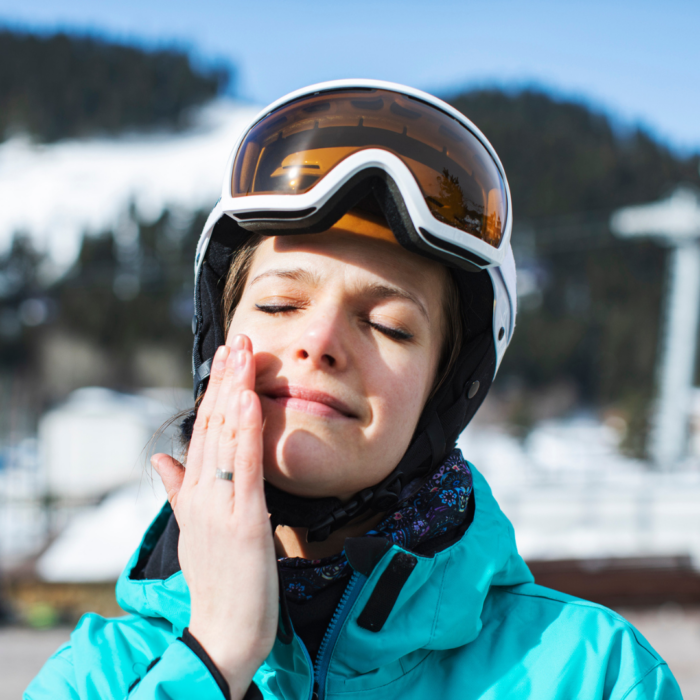Acne Extractions
The expert aestheticians at California Skin Institute have helped many patients reduce breakouts with acne extractions.* Performed in a clinical setting by trained professionals, acne extractions can improve overall skin health and reduce the frequency and intensity of breakouts.*
In this installment, we sit down with Tara Davis, one of the expert aestheticians at California Skin Institute, to learn all about extractions and why they are so important.
Q: Why should patients get acne extractions?
Tara Davis: Acne extractions are a really good way to keep the pores clean and the skin healthy.* It’s not just about getting rid of acne or reducing breakouts – extractions are a great way to prevent acne in the first place.*
For most people the skin undergoes a 28 day cycle during which the body creates new cells and sloughs off the old ones. Also, your skin has lots of pores. They are super important because they act as pathways for oil to rise up to the skin’s surface to keep it moisturized and protected. However, what often happens is that the cells that the skin is trying to shed end up getting stuck in this oil.
Q: And why is that clogging so bad for skin health?
Tara Davis: Well you have to remember that our skin is full of tiny bacteria. Among these is the p. acne type, which loves oxygen-poor environments. So when a pore is clogged, it makes the ideal environment for p. acne bacteria to flourish.
Q: Are extractions covered by health insurance?
Tara Davis: We’ve worked with both HMO and PPO patients for whom acne extractions were covered under their insurance.* However, there are certain rules the patient has to follow with their insurance company. Every plan is different.
Q: How can you tell if your pores are clogged?
Tara Davis: Just looking closely into the mirror, you can tell if the pores are clean. Some people will get blackheads, which look like tiny black dots on the skin. It’s a common misconception that the dark color is dirt – it’s actually the oxidation of the pore plug. Others will develop milia, which look like tiny white bumps. In this case the pore is covered by a thin layer of dead skin cells, which prevents the oil from leaving the skin.
Q: Do clogged pores always lead to acne?
Tara Davis: Well, it has to do more with what the patient considers to be acceptable in their case. If you have clogged pores, then at the very least you have blackheads. It may not be the severe, inflamed acne, but it’s still acne and you now have more bacteria living inside the pores. In some people it will stop at blackheads, while others will have a much more serious manifestation. So it’s always better to clear out the pore. It keeps your skin healthier.
Q: How do you usually perform acne extractions?
Tara Davis: During an extraction, the pores are cleansed manually by pressing on the skin, and squeezing out the pore plugs.* We also have a number of tools we can use to make the process more comfortable and safe for the patient.*
Q: Is this something a patient can do at home?
Tara Davis: Well, you can do a lot of things at home, but that doesn’t mean it’s a good idea. Haha! For example, we have a very clean environment here, our tools are sterile and we wear surgical gloves. When people try to do it at home, they can get an infection because they don’t take the same precautions. Also, with acne extractions, it’s very easy to damage and bruise the skin. Here at California Skin Institute the aestheticians are trained to minimize damage to healthy skin during extractions.*
Another big point is you have to know when to leave the skin alone. Some pimples should not be touched during extraction because that can cause too much damage.* Like with cystic acne – it’s just too deep to get it out without breaking the skin and leaving scars.*
Q: Do acne extractions hurt?
Tara Davis: Yes and no. Pain is a relative concept – it depends on the person’s pain tolerance and how severe their acne is.* Most patients describe extractions as a little “pinchy” or “pokey.”* But many also feel that the benefits outweigh any discomfort.*
Q: How long does the treatment last?
Tara Davis: A treatment will usually last about half an hour, and about 20-25 minutes is spent on the extraction, with the remaining time devoted to cleansing and prepping the skin.* This is usually a good amount of time for most patients.* Going longer that that can become a bit uncomfortable.*
Q: How often should a person get extractions?
Tara Davis: With the patients who see me, I recommend doing extractions every 4-6 weeks.* That tends to coincide with your natural skin cycle.* But patients who are just starting out with acne treatments might need to do extractions more often, until the acne is under control.* It really depends on the condition of your skin.
Q: How should the patient prepare for acne extraction?
Tara Davis: The one big thing is to avoid tretinoin products a couple days before your appointment.* Tretinoin makes the skin a bit more sensitive and a little thinner, so the extractions become more uncomfortable.*
Q: Are there any side effects?
Tara Davis: Nothing serious.* We’re pressing and squeezing the skin, so there’s bound to be a little redness and inflammation.* Some patients might also have a tiny, pinpoint bruise here and there where the pore was especially difficult to clear.* But any of these side effects are easily covered up with makeup.* You can put on makeup right after the procedure.*
Q: What else should the patient do in between extractions?
Tara Davis: I would say make sure to use your skin care products. I like to tell patients that creams and cleansers don’t work in the bottle, they work on the skin. If you don’t have a solid routine, the clogging will be worse because you’re not removing excess sebum and dead skin cells.* The best way to understand it is to realize that extractions are half of the puzzle, the other half is what you do at home.* If you maximize all of your options you’ll have skin that looks and feels better.*
(Tara Davis has been an Aesthetician in both Day Spa and Medical Practices for over 17 years. She helps patients at California Skin Institute San Jose – Los Gatos, and educates her patients on product knowledge, and customizes a treatment plan for each individual.)
*Individual results may vary and are not guaranteed.



 / 291 Reviews
/ 291 Reviews